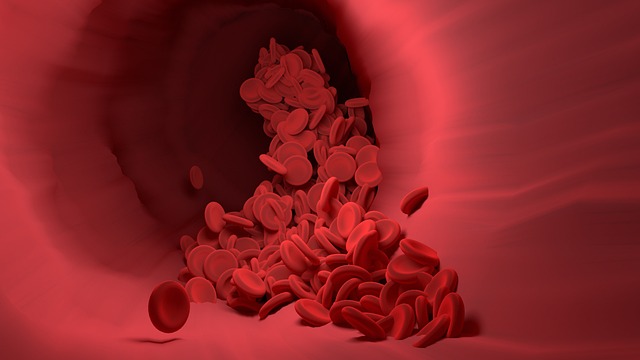Blood Cells Composition Your Health Guide
Introduction
Have you ever wondered what goes on inside your body at a microscopic level? Well, wonder no more because in this article, we’re going to delve deep into the fascinating world of blood cells composition. Blood is a lifeline, coursing through our veins, and it’s composed of several types of cells, each with its own unique function. In this comprehensive guide, we’ll explore the different types of blood cells, their functions, and why they are essential for our health.
The Basics of Blood
Before we dive into the specifics of blood cells, let’s start with the basics. Blood is a vital fluid in the human body responsible for various crucial functions. It’s a complex mixture of cells, nutrients, and other components, and it plays a pivotal role in transporting oxygen, nutrients, hormones, and waste products throughout the body.
The Blood Cells Composition
Blood consists of:
1. Plasma in Blood Cells Composition
- Plasma is the liquid component of blood, making up about 55% of its total volume.
- It contains water, electrolytes, proteins, hormones, and waste products.
2. Formed Elements
- Formed elements are the solid components of blood and include red blood cells, white blood cells, and platelets.
Red Blood Cells (Erythrocytes)
The Oxygen Carriers
Red blood cells, also known as erythrocytes, are perhaps the most well-known blood cells. Their primary function is to transport oxygen from the lungs to various tissues and organs in the body.
Structure of Red Blood Cells
- Red blood cells are biconcave discs with no nucleus.
- Hemoglobin, a protein, gives them their red color and binds with oxygen.
The Oxygen Exchange
- Red blood cells pick up oxygen in the lungs and release it to cells in need.
White Blood Cells (Leukocytes)
Guardians of Immunity
White blood cells, or leukocytes, play a pivotal role in our immune system. They defend the body against infections and foreign invaders.
Types of White Blood Cells
- Neutrophils, lymphocytes, monocytes, eosinophils, and basophils are the five main types of white blood cells, each with its own specialized function.
Immune Response in Blood Cells Composition
- When an infection occurs, white blood cells spring into action, attacking and neutralizing pathogens.
Platelets (Thrombocytes)
Clotting Agents
Platelets are tiny cell fragments that play a significant role in blood clotting, preventing excessive bleeding when you get injured.
The Clotting Process
- Platelets rush to the site of injury, where they form a clot to stop bleeding.
- This process is crucial for wound healing.
Blood Disorders Blood Cells Composition
Anemia:
Anemia occurs when there is a deficiency of red blood cells or a decrease in the amount of hemoglobin in the blood. This can result in fatigue, weakness, and pale skin.
Hemophilia:
Hemophilia is a genetic disorder that impairs the blood’s ability to clot properly. People with hemophilia may bleed excessively even from minor injuries.
Thrombocytopenia:
Thrombocytopenia is a condition characterized by a low platelet count in the blood. It can lead to easy bruising and bleeding.
Leukemia Blood Cells Composition:
Leukemia is a type of cancer that affects the bone marrow and blood. It results in the overproduction of abnormal white blood cells, which can crowd out healthy blood cells.
Sickle Cell Disease:
Sickle cell disease is a genetic disorder that causes red blood cells to become misshapen and break down easily. This can lead to pain, anemia, and other complications.
Hemochromatosis Blood Cells Composition:
Hemochromatosis is a genetic disorder that causes the body to absorb too much iron from the diet. Excess iron can accumulate in organs like the liver, heart, and pancreas, causing damage.
Thalassemia:
Thalassemia is a group of inherited blood disorders that affect the production of hemoglobin. It can result in anemia and other health problems.
Polycythemia Vera:
Polycythemia vera is a rare blood cancer that leads to the overproduction of red blood cells, white blood cells, and platelets. It can increase the risk of blood clots.
Aplastic Anemia:
Aplastic anemia is a rare condition in which the bone marrow fails to produce enough blood cells, leading to low counts of red blood cells, white blood cells, and platelets.
Lymphoma:
Lymphoma is a cancer that affects the lymphatic system, including the blood. It can result in the abnormal growth of lymphocytes (a type of white blood cell).
Myeloma Blood Cells Composition:
Multiple myeloma is a cancer of plasma cells, which are a type of white blood cell. It can lead to weakened bones and anemia.
Von Willebrand Disease:
Von Willebrand disease is a genetic disorder that impairs blood clotting due to a deficiency in a clotting protein called von Willebrand factor.
To read more about my cholesterol management blog click this link
FAQs
What is the primary function of red blood cells?
Red blood cells primarily transport oxygen from the lungs to various body tissues.
How do white blood cells protect the body against infections?
White blood cells detect and neutralize pathogens during an immune response.
What role do platelets play in the blood?
Platelets are crucial for blood clotting, preventing excessive bleeding.
What are some common blood disorders?
Common blood disorders include anemia, leukemia, and hemophilia.
Why is blood considered a vital fluid in the human body?
Blood is vital because it transports oxygen, nutrients, hormones, and waste products, ensuring the proper functioning of our organs and tissues.




